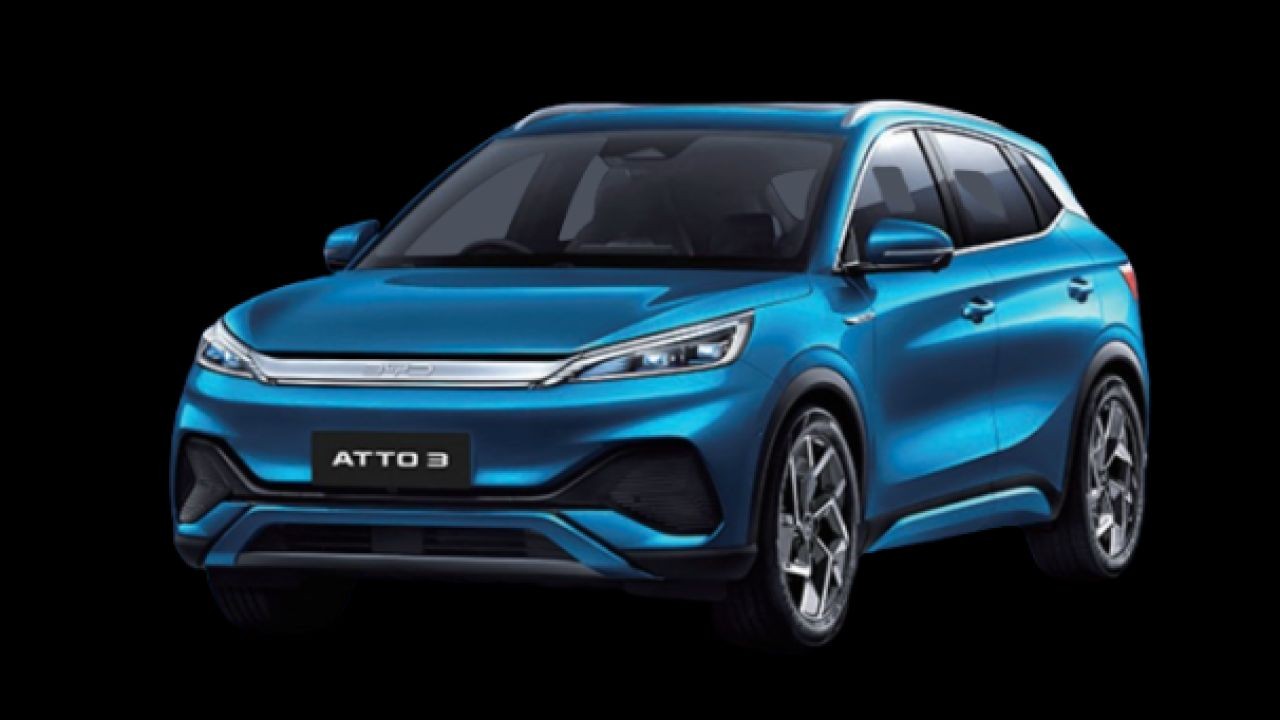Australia stands at a crossroads in its journey towards a sustainable energy future. With climate change concerns intensifying, the nation must decide between two promising technologies: green hydrogen and electric vehicles (EVs). Both represent viable paths for reducing emissions and transitioning away from fossil fuels, but which is better suited to Australia's unique economic, geographical, and policy landscape? This article delves into the potential of green hydrogen and EVs in Australia, examining industry trends, regulatory insights, and real-world case studies to determine the most promising path forward.
Understanding Green Hydrogen
The concept of green hydrogen involves producing hydrogen through the electrolysis of water using renewable energy sources such as wind and solar power. This process results in zero carbon emissions, making it an attractive option for decarbonizing sectors where direct electrification is challenging. In Australia, green hydrogen has caught the attention of policymakers and industry leaders due to the nation's abundant natural resources and renewable energy potential.
Australia's Green Hydrogen Potential
Australia's vast land area, abundant sunshine, and strong winds offer ideal conditions for generating renewable energy, a crucial component for producing green hydrogen. According to the Australian Renewable Energy Agency (ARENA), the country has the potential to produce 500 times the current global demand for hydrogen. Moreover, the government has committed over AUD 500 million to support hydrogen research, development, and deployment, showcasing its strategic interest in this technology.
However, challenges remain. The infrastructure required for hydrogen production, storage, and transportation is still in its infancy, necessitating substantial investment and innovation. Additionally, the current cost of green hydrogen production is higher than that of conventional fuels, posing economic challenges for widespread adoption.
Case Study: Hydrogen Energy Supply Chain (HESC) Project
One of the most ambitious green hydrogen projects in Australia is the Hydrogen Energy Supply Chain (HESC) project. This initiative aims to produce hydrogen in Victoria's Latrobe Valley and transport it to Japan. The project is a collaboration between Australian and Japanese companies and has received significant support from both governments.
Problem: The project faced the challenge of creating an efficient and cost-effective method for hydrogen production and transport.
Action: By leveraging Victoria's brown coal resources and implementing carbon capture and storage (CCS) technology, the HESC project aims to produce hydrogen with minimal environmental impact.
Result: The pilot phase successfully demonstrated the feasibility of producing and transporting hydrogen. While still in its early stages, the project has the potential to position Australia as a leading exporter of clean hydrogen.
Takeaway: The HESC project illustrates the potential for cross-border collaboration in developing green hydrogen infrastructure. It also highlights the importance of integrating CCS technology to minimize emissions during hydrogen production.
The Rise of Electric Vehicles
Electric vehicles have gained significant traction globally, with countries like Norway and China leading the charge in adoption rates. In Australia, the EV market is still emerging but shows promising signs of growth. The government's commitment to reducing emissions and the increasing availability of EV models are driving interest among consumers and businesses.
EV Adoption in Australia: Current Landscape
Despite the global momentum, EV adoption in Australia has been relatively slow. According to the Australian Bureau of Statistics (ABS), EVs accounted for only 2% of new car sales in 2022. However, recent developments indicate a shift. The federal government's Electric Vehicle Strategy aims to increase EV uptake by removing import tariffs and providing incentives for EV infrastructure development.
Additionally, state governments are introducing initiatives to accelerate EV adoption. For instance, Victoria introduced a subsidy program offering up to AUD 3,000 for new EV purchases, while New South Wales plans to install over 500 fast-charging stations across the state by 2025.
Case Study: Tesla's Impact on the Australian EV Market
Tesla, a global leader in electric vehicles, has played a pivotal role in shaping the Australian EV landscape.
Problem: High initial costs and limited charging infrastructure hindered EV adoption in Australia.
Action: Tesla introduced its popular Model 3, offering a more affordable entry point for Australian consumers. The company also invested in expanding its Supercharger network, making long-distance EV travel more feasible.
Result: Tesla's Model 3 became Australia's best-selling EV in 2021, accounting for over 60% of the market share. The increased visibility and accessibility of EVs have spurred interest among consumers and competitors alike.
Takeaway: Tesla's success demonstrates the importance of affordability and infrastructure in driving EV adoption. It also underscores the role of market leaders in shaping consumer perceptions and industry standards.
Pros and Cons: Green Hydrogen vs. Electric Vehicles
Pros of Green Hydrogen
- Versatility: Green hydrogen can be used in various applications, including transportation, industry, and power generation.
- Energy Storage: Hydrogen offers a viable solution for storing excess renewable energy, addressing the intermittency of wind and solar power.
- Export Potential: Australia's vast renewable resources position it as a potential leader in hydrogen exports, particularly to Asia.
Cons of Green Hydrogen
- High Costs: The current cost of green hydrogen production remains higher than traditional fuels.
- Infrastructure Challenges: Significant investment is required to develop the necessary infrastructure for hydrogen production and distribution.
- Technology Maturity: Hydrogen technology is still in its early stages, with ongoing R&D needed to enhance efficiency and scalability.
Pros of Electric Vehicles
- Established Technology: EVs are a proven technology with a growing market presence globally.
- Lower Operating Costs: EVs offer lower maintenance and fuel costs compared to internal combustion engine vehicles.
- Environmental Benefits: EVs produce zero tailpipe emissions, contributing to improved air quality in urban areas.
Cons of Electric Vehicles
- Range Anxiety: Limited driving range and charging infrastructure can deter potential buyers.
- Battery Production Impact: The production of EV batteries involves environmental and ethical concerns related to mining and material sourcing.
- Initial Costs: Despite decreasing prices, EVs remain more expensive upfront than traditional vehicles.
Regulatory Insights and Policy Implications
Australia's regulatory landscape plays a crucial role in shaping the future of green hydrogen and electric vehicles. The Australian Competition & Consumer Commission (ACCC) and Australian Prudential Regulation Authority (APRA) are instrumental in ensuring fair competition and consumer protection in these emerging markets.
The Australian government's commitment to achieving net-zero emissions by 2050 has led to the development of supportive policies for both technologies. The National Hydrogen Strategy outlines a vision for a clean hydrogen industry, focusing on international collaboration and domestic market growth. Meanwhile, the Electric Vehicle Strategy aims to incentivize EV adoption through tax breaks and infrastructure investment.
Expert Opinions and Thought Leadership
Industry experts offer valuable insights into the potential and challenges of green hydrogen and EVs in Australia. Dr. Fiona Simon, CEO of the Australian Hydrogen Council, emphasizes the need for collaboration between government, industry, and research institutions to accelerate hydrogen development. She advocates for clear policy frameworks and investment in R&D to drive cost reductions and technological advancements.
In contrast, Behyad Jafari, CEO of the Electric Vehicle Council, highlights the importance of consumer education and infrastructure development in driving EV adoption. He stresses the need for government support in expanding charging networks and providing financial incentives to make EVs more accessible to the public.
Common Myths and Mistakes
Myth 1: Green Hydrogen is Too Expensive to Be Viable
Reality: While green hydrogen production costs are currently high, technological advancements and economies of scale are expected to reduce costs significantly over the next decade.
Myth 2: Electric Vehicles Will Dominate All Transportation
Reality: While EVs are well-suited for passenger vehicles, green hydrogen offers a more viable solution for heavy-duty and long-haul transportation due to its energy density.
Myth 3: Hydrogen is Unsafe
Reality: Advances in safety technology and rigorous regulations ensure that hydrogen can be safely produced, stored, and used in various applications.
Future Trends and Predictions
As the global energy landscape evolves, both green hydrogen and electric vehicles are poised for significant growth in Australia. By 2030, Deloitte predicts that hydrogen could contribute to 10% of Australia's energy mix, driven by increased investment and technological advancements. Meanwhile, the Electric Vehicle Council forecasts that EVs could account for 50% of new car sales by 2030, supported by expanded infrastructure and consumer incentives.
Conclusion
Australia's path to a sustainable energy future involves careful consideration of both green hydrogen and electric vehicles. While each technology has its advantages and challenges, a complementary approach could harness the strengths of both, leading to a more resilient and sustainable energy system. Policymakers, industry leaders, and consumers must collaborate to overcome barriers and capitalize on opportunities, ensuring Australia remains at the forefront of the global clean energy transition.
Call to Action: What are your thoughts on Australia's energy future? Share your insights and join the conversation on LinkedIn or in the comments below!
People Also Ask (FAQ)
How does green hydrogen impact Australia's economy? Green hydrogen has the potential to create new export markets for Australia, particularly in Asia, and drive economic growth by leveraging the country's renewable energy resources.
What are the biggest misconceptions about electric vehicles in Australia? A common myth is that EVs have limited range. However, advancements in battery technology have significantly extended driving distances, making EVs a viable option for many Australians.
What strategies are effective for promoting EV adoption in Australia? Effective strategies include expanding charging infrastructure, providing financial incentives, and raising public awareness about the environmental and economic benefits of EVs.
Related Search Queries
- Green hydrogen projects in Australia
- Electric vehicle adoption in Australia
- Australia's renewable energy future
- Hydrogen vs. electric vehicles
- Australia's net-zero emissions strategy
- EV charging infrastructure in Australia
- Future of hydrogen energy in Australia
- Government incentives for EVs in Australia
- Challenges of green hydrogen production
- Electric vehicle market trends in Australia





































RosalindaP
4 months ago